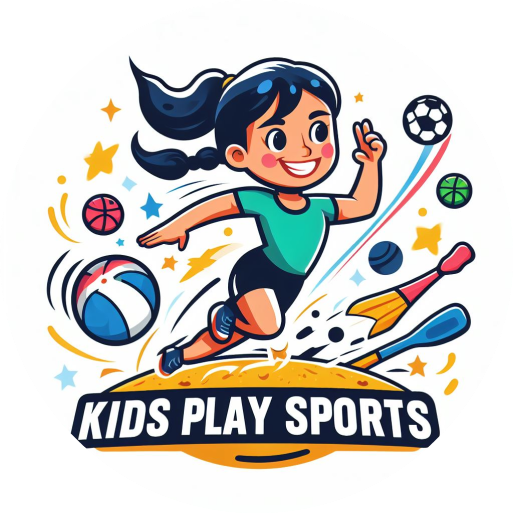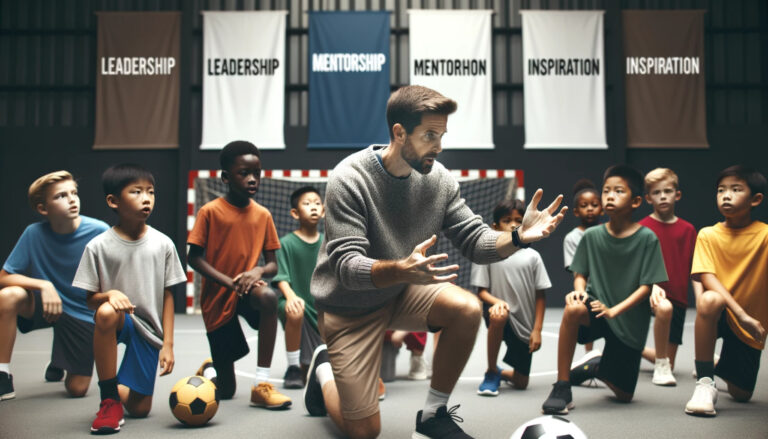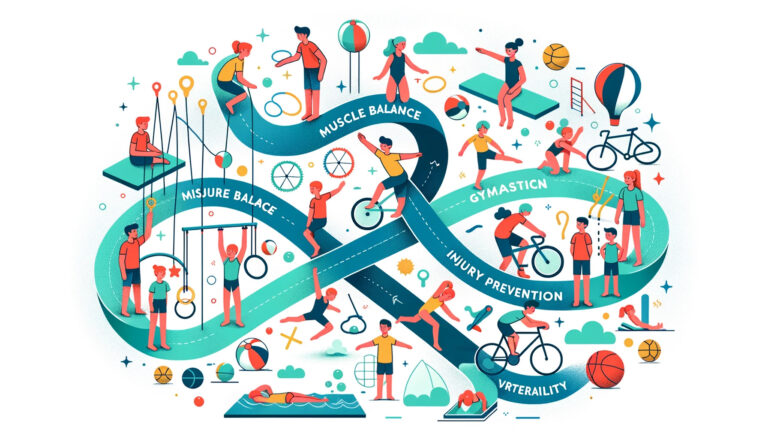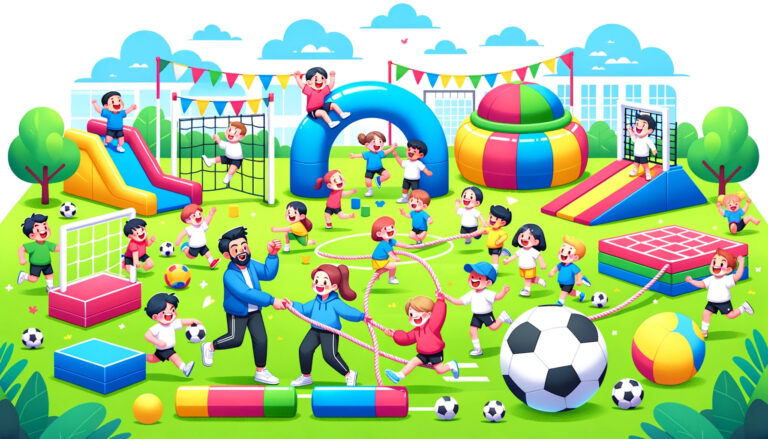Incorporating Technology in Kids’ Sports Training
- The Importance of Rest and Recovery in Young Athletes’ Regimens - October 23, 2023
- Boosting Stamina and Endurance in Young Athletes: Tips and Tricks - October 23, 2023
- The Role of Coaches in Shaping Young Athletes - October 23, 2023
Importance of Technology in Kids’ Sports Training
Technology has become an integral part of kids’ sports training, offering numerous benefits that cannot be ignored. By incorporating technology into training sessions, young athletes can enhance their skills, improve their performance, and achieve their full potential. With the help of various technological tools and devices, coaches can provide precise feedback, track progress, and tailor training programs to the specific needs of each child.
One of the key advantages of technology in kids’ sports training is the ability to analyze and measure performance. With advanced sensors and tracking systems, coaches can collect data on various aspects of a child’s performance, such as speed, movement patterns, and technique. This data can be used to identify strengths and weaknesses, allowing coaches to design personalized training programs that target specific areas for improvement. Moreover, by utilizing video analysis software, athletes can review their own performances, enabling them to identify areas of improvement and make necessary adjustments to their technique.
How Technology is Revolutionizing Kids’ Sports Training
Technology has brought about a revolution in kids’ sports training, transforming the way children learn and develop their athletic skills. With the use of advanced equipment and tools, young athletes are now able to track their performance, analyze their technique, and receive personalized feedback like never before. This has not only enhanced their training experience but also improved their overall performance on the field.
One noteworthy example of how technology revolutionizes kids’ sports training is the introduction of wearable devices. These devices, such as fitness trackers and smartwatches, enable children to monitor their heart rate, track their distance covered, and measure their speed and agility during practice or competitive games. This real-time data helps young athletes assess their performance levels, set goals, and make necessary adjustments to improve their skills. Moreover, incorporating virtual reality (VR) and augmented reality (AR) technologies into sports training allows children to experience simulated game scenarios and develop decision-making abilities in a controlled environment. Such immersive experiences not only make training more engaging and enjoyable but also enhance their cognitive skills on the field.
Benefits of Using Technology in Kids’ Sports Training
Technology has brought about a slew of benefits in kids’ sports training. One of the primary advantages is the ability to track and monitor performance. With the help of wearable devices and sensors, coaches and parents can collect data on various metrics such as speed, distance, heart rate, and even technique. This data provides valuable insights into a child’s development and allows for personalized training programs to be created based on their specific needs.
In addition, technology offers enhanced feedback mechanisms for young athletes. Through video analysis software, coaches can record and review a child’s performance in real-time, pinpointing areas for improvement and providing instant feedback. This immediate feedback helps children grasp concepts more effectively and make adjustments to their technique or strategy in real-time. Furthermore, technology allows for virtual coaching sessions, where experts can remotely guide young athletes, regardless of their geographic location. This not only expands the reach of coaching but also ensures that children receive specialized instruction from professionals who may not be available locally.
Types of Technology Used in Kids’ Sports Training
GPS Tracking Systems: One of the most widely used technologies in kids’ sports training is GPS tracking systems. These devices are worn by athletes and track their movements and performance metrics in real-time. The collected data is then analyzed to provide insights on the athlete’s speed, distance covered, and even their heart rate during practice or games. GPS tracking systems are especially popular in sports like soccer, football, and track and field, where understanding an athlete’s positioning and performance on the field can be crucial for improvement.
Video Analysis Software: Another important technology used in kids’ sports training is video analysis software. Coaches and trainers use this software to capture and analyze footage of athletes’ performances. By breaking down the video footage, coaches can identify areas of strength and weaknesses, correct technique errors, and provide feedback for improvement. Video analysis software also allows for side-by-side comparisons, slow-motion playback, and drawing tools to highlight specific movements or techniques. This technology is beneficial for a wide range of sports, including basketball, tennis, gymnastics, and swimming, as it provides visual feedback that can greatly enhance an athlete’s learning and skill development.
Examples of Successful Technology Integration in Kids’ Sports Training
One example of successful technology integration in kids’ sports training is the use of wearable devices. These devices, such as fitness trackers and GPS watches, provide real-time data on athletes’ performance and metrics. Coaches and parents can track their child’s heart rate, steps taken, distance traveled, and even sleep patterns. This data can help identify areas for improvement, track progress over time, and ensure proper rest and recovery. By having access to this information, coaches and parents can tailor training programs to the specific needs of each child, leading to enhanced performance and reduced risk of injury.
Another example of successful technology integration is the use of video analysis tools. With the help of cameras and specialized software, coaches can record and review athletes’ performances in detail. This allows for a comprehensive analysis of techniques, positioning, and movement patterns. Coaches can then provide targeted feedback and suggestions for improvement. Video analysis also facilitates communication between coaches and athletes, as it provides a visual reference for discussing strategies and game plans. By leveraging video technology, kids can gain a better understanding of their strengths and weaknesses, leading to more effective training sessions and ultimately improved performance on the field.
Factors to Consider when Incorporating Technology in Kids’ Sports Training
When incorporating technology into kids’ sports training, there are several factors that need to be considered. Firstly, it is important to assess the age and skill level of the children involved. Technology should be age-appropriate and cater to the specific needs and abilities of the young athletes. For example, younger children may benefit from simple and engaging interactive games, while older kids can explore more advanced training tools.
Furthermore, it is crucial to consider the cost and accessibility of the technology being implemented. Not all families may have access to the latest gadgets or software, so it is essential to choose technologies that are affordable and widely available. Additionally, considering the ease of use and user-friendliness is also important, as both parents and coaches should be able to navigate and utilize the technology effectively to maximize its benefits for the young athletes. By carefully evaluating these factors, technology can be successfully integrated into kids’ sports training, enhancing their overall learning and development.
Challenges and Solutions in Implementing Technology in Kids’ Sports Training
Challenges and Solutions in Implementing Technology in Kids’ Sports Training
The integration of technology in kids’ sports training comes with its own set of challenges. One major hurdle is the initial cost of implementing technology systems, which can be quite expensive for many sports programs or individual coaches. Additionally, there may be resistance from traditionalists who believe that technology takes away from the core elements of sports training, such as physical skill and mental toughness.
Another challenge is ensuring that the technology used is age-appropriate and safe for kids. This includes selecting equipment and software that is suitable for their developmental stage and physical abilities. Moreover, there may be concerns about privacy and data security, as technology often involves collecting and analyzing personal information. To address these challenges, it is crucial for coaches and sports programs to carefully research and evaluate the technological tools they intend to use. They should also provide proper training and guidance to both kids and their parents to ensure a smooth and secure implementation. By carefully considering these challenges, coaches and parents can find solutions that allow technology to play a valuable role in kids’ sports training while mitigating any potential risks or drawbacks.
Tips for Parents and Coaches on Using Technology in Kids’ Sports Training
When it comes to using technology in kids’ sports training, parents and coaches play a crucial role in ensuring its effective integration. Here are a few tips for parents and coaches on how to utilize technology in a way that benefits young athletes:
1. Research and choose the right tools: With numerous technological options available, it is essential to select tools that align with the specific training needs of the child. Consider factors such as the sport, age, skill level, and personal goals of the young athlete. Take the time to explore various apps, devices, or software before making a decision. Keeping in mind the child’s comfort level with technology is also important.
2. Integrate technology gradually: Introducing new technology should be done gradually to give young athletes time to adapt. Begin with simple tools and gradually progress to more advanced ones as they become more comfortable and competent. By allowing them to build their confidence and proficiency, they can gain the most from the technology’s benefits. Additionally, consider incorporating technology into different aspects of their sports training routine, such as practice sessions, performance analysis, or mental preparation exercises.
The Future of Technology in Kids’ Sports Training
Technology continues to evolve at a rapid pace, and its impact on kids’ sports training is only expected to grow in the future. As we move forward, technological advancements will offer even greater possibilities for enhancing athletic development and performance in young athletes.
One area where we can expect to see significant advancements is the use of augmented reality (AR) and virtual reality (VR) in kids’ sports training. These immersive technologies have already started to make waves, allowing athletes to experience real-life scenarios in a simulated environment. By donning a VR headset, young athletes can practice their skills and techniques in a realistic setting, without the constraints of the physical world. This not only enhances their learning and muscle memory but also boosts their confidence and prepares them for various game situations. As AR and VR technologies continue to improve, we can anticipate unprecedented opportunities for coaches and young athletes to train more effectively and efficiently.
Resources for Further Exploration of Technology in Kids’ Sports Training
When it comes to further exploration of technology in kids’ sports training, there are several resources that can provide valuable insights and guidance. One such resource is online forums and communities dedicated to the topic. These platforms allow parents and coaches to connect with each other, share experiences, and exchange knowledge on the best technology tools and practices for enhancing kids’ sports training. Additionally, online articles and blogs written by experts in the field can offer valuable information on the latest advancements in technology and how they can be effectively utilized in kids’ sports training.
Another resource worth exploring is educational websites and online courses that focus specifically on technology in kids’ sports training. These platforms provide in-depth knowledge and training on various technological tools such as wearable devices, performance-tracking apps, and virtual reality simulations. By enrolling in these courses or accessing the information provided on these websites, parents and coaches can gain a deeper understanding of how technology can be integrated into training sessions to improve performance and enhance the overall sports experience for children. With these resources at hand, parents and coaches can stay informed and up-to-date on the latest trends and developments in technology for kids’ sports training.






